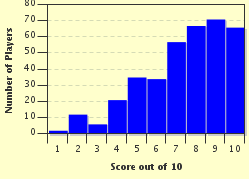Quiz Answer Key and Fun Facts
1. I am sure that the ancient Greek philosopher Socrates could tell you about the lethal affects of which of the following options?
2. The incredibly lethal poison known as ricin is made from which of the following?
3. Foxglove is a group of plants that can be very toxic if consumed, but are also used to make which medicinal drug?
4. Tetrodotoxin is a very lethal compound contained in which of the following?
5. Saddam Hussein, the fifth president of Iraq, liked to poison dissidents with thallium before allowing them to emigrate.
6. What is the alternate name for the poison often called deadly nightshade?
7. During the Holocaust, which of the following options was used by Nazi Germany to kill thousands of prisoners in gas chambers?
8. On January 31, 2000 a British court found Dr. Harold Shipman guilty of the murder of 15 patients by poisoning them with which of the following?
9. What kind of toxin is strychnine?
10. The 19th century murderer Dr. H.H. Crippen was accused of killing his wife with which of the following poisons?
Source: Author
dcpddc478
This quiz was reviewed by FunTrivia editor
WesleyCrusher before going online.
Any errors found in FunTrivia content are routinely corrected through our feedback system.

